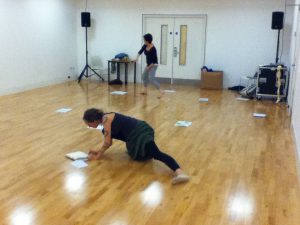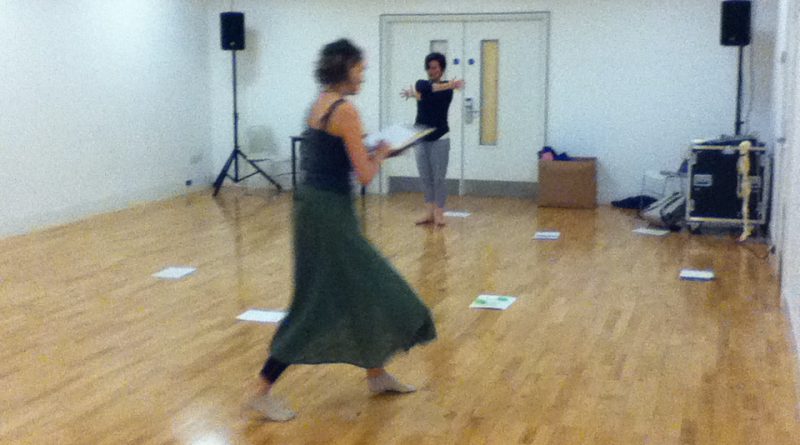Bringing research activities into the body
By Eline Kieft
Over the last twelve months I talked to many people about this project. When I explain the two strands addressed by our Toolkit, people immediately get its potential contribution to mental and emotional wellbeing. However, explaining how the body can be applied to the very concrete activities of research seems much harder to grasp.
Whether or not you choose ethnography as an approach, every research will engage with the following phases in the ‘life cycle’ of the project:
- Original idea and research question
- Theory, Methodology and Methods
- Literature review
- Funding Application *)
- Data collection
- Data analysis
- Publications
- Presentations
*) If you’re lucky, funding application might be the happy exception to your situation…
The phases often overlap. Each has its own quality, energy, and challenges. Rather than looking to design a new ‘embodied’ methodology, would it be possible to (re)integrate the body into existing ones? I consider the body as site of knowledge that offers fertile and rich ways of exploring any part of the research cycle.

The Toolkit applies some of the principles of Constellations Theory, originally developed by Bert Hellinger. It has been successfully used by organisations and businesses over the last 20-30 years, to address change processes, project management, coaching, sustainability, knowledge management, unfreezing problematic situations and creating tailored solutions.
In this case, the system we investigate and ‘constellate’ is the research project itself. Through a ‘a spatial representation of the system elements’ (Birkenkrahe, 2008), we can explore their qualities, essence, and most importantly our relationship to them, as well as the relationship between various elements themselves.
Take literature review for example. We can get inundated with questions about how to search, where to start, how to connect the work of various authors, and how to find our unique and original contribution amongst all that has been written before. It easily becomes too daunting to even start…
The body can offer a different perspective. You can engage with these questions from a physical place, by literally placing your literature in the space with you, as you see in the pictures above.
This approach helps to:
- Refresh and relax your relationship to literature review.
- Learn about hierarchies within your texts, pieces that overlap, gaps between the existing works, and emerging patterns between the authors you selected.
- Invite a critical ‘dialogue’ between the different pieces by moving them around, cluster some together and let them ‘speak’ to each other; or let some oppose each other by literally placing them opposite each other. You might be surprised to see what happens.
- Glean the order in which you are going to read or present them, or discover the level of ‘intensity’ with which you will read them for your project.
- Enjoy the freedom of moving and playing within this literature landscape around you.
- Embody and express any joy, doubts, overwhelm, or confidence that you experience in regard to literature review. Moving these emotions creates space and agency when you are behind your desk again.
After working with a senior, well-established academic to develop this Embodied Literature Exploration, she commented:
“Using intuition is not normally encouraged in the formal research process, neither is movement, feeling into the body, or connecting to personal issues. This was useful and innovative. It helped me to see that when I get myself into the right heartspace, then the research process falls into place. It helped me to deal with a lot of books that I still have to read for a presentation, and prioritise and structure how I could go about that.”
Engaging the body can offer new and creative pathways into your research. If it is possible for your literature review… what else can you imagine?
Reference
Birkenkrahe, M. (2008) ‘System constellations as a tool supporting organisational learning and change processes’, International Journal of Learning and Change, 3(2), pp. 125-144.

